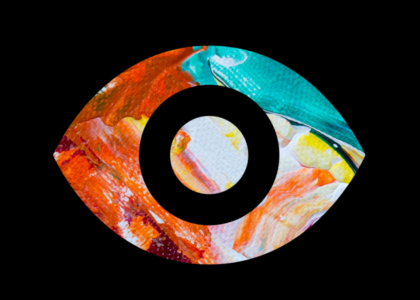In our last note, we introduced the Q4 theme of Presence by defining its meaning and benefits.
Today, we go a bit deeper. I’m sharing a framework and a practice to help cultivate Presence in your day-to-day life.
Step 1: Master Your Moments
The journey to cultivating awareness can be simultaneously the most rewarding and the most elusive thing in our lives.
Most people spend their days task-hopping, oscillating between a sense of ‘getting shit done’ and feeling constantly behind. Learning how to create pauses in our autopilot is an act of self-care.
When you prioritize presence, you uncover greater choice—the ability to understand and unpack the specifics of your daily experience, and by doing so, have agency over it.
The more awareness you can cultivate, the more connected you become to the ability to dream, envision, and design your life.
So, How Exactly Do I Master a Moment?
You break it down to its component parts.
Shinzen Young, a mindfulness teacher and meditation expert, identifies six key components of the human experience as part of his Unified Mindfulness system. These are commonly referred to as the “See, Hear, Feel” categories, guiding us to become more aware of the full range of our internal and external worlds:
- See (Outer Sight): External visual experiences—what you see with your eyes in your environment, such as people, objects, colors, and movements.
- Hear (Outer Sound): External sounds—what you hear from your environment, such as conversations, nature, or mechanical noises.
- Feel (Outer Body Sensation): Physical sensations you detect on the surface or within your body. These include pressure, temperature, tension, and other tactile experiences.
- See (Inner Mental Image): Mental imagery or pictures that appear in your mind, such as memories, fantasies, or visualizations.
- Hear (Inner Mental Talk): Internal sounds, including self-talk, internal dialogue, or thoughts that take the form of mental sounds (a.k.a., a voice in your head).
- Feel (Emotional Body Sensation): Sensations related to emotions, such as tightness in the chest from anxiety or warmth in the heart from joy.
At first, breaking down your experience like this may feel repetitive or forced, but with practice, it becomes second nature.
We get to train our minds to spot what is actually present in our lives.
I’ve been working with an Interior Design firm for several years now.
The owner is a creative genius. The things you see, hear, and feel in his spaces elicit a full-body sensory experience, from audible “WOW’s” to immediate feelings of joy and peace.
When we began our work together, the challenge in this business was a disconnect between the beauty of their work product and the path to get there.
This leader was feeling a sense of overwhelm that arose when he took on too much work, which was maxing out his company’s capacity to scale.
As always, we began by working with the business owner and then extended to the rest of the team.
Although he had an eye, ear, and heart for sensory experiences, what he was lacking was a connection to the physical sensations in his own body and the emotions that arose as a result of them.
Like many leaders, he was disconnected from his own body.
This manifested in the form of tension headaches and severe, seemingly unexplainable stomach pains that would take him out of commission from work for days at a time, and often led to his team being maxed out without the founder at the helm.
The task at hand was to understand the connection between the tension in his body and accompanying emotions. From this place, we could find greater awareness, and therefore choice, about how to handle his day-to-day stressors.
The ‘Aha’ Moment: We found a connection between his internal narratives (Inner Mental Talk), his expectations of himself as a leader (Inner Mental Image), and his physical symptoms (Outer Body Sensation).
The more he felt he was letting his team down, the more overwhelmed he got, and the greater the physical pain in his body.
Creating a conversation between these internal and external elements of his experience was a game changer.
A Simple Practice: Bring Your Body Into the Conversation
I’d like to share one of my favorite tools to use with leaders when building an initial relationship with the body.
Ask Your Body for Direction:
- Pause and take a deep breath.
- Notice your body—is there any tension? Any other Outer Body Sensation (warmth, coolness)?
- Acknowledge the sensation: “I see you, and I’m paying attention.”
- Ask your body for information: “What do you want me to see, hear, or feel?”, “What do you want me to know?”
- Say thank you and ask, “Is there anything you need from me, to be ready to release?”
From here, you can understand what you’re feeling and what actions to take to feel better in the day-to-day.
Up Next: A Look at Internal Narratives
Thanks for reading this far—I hope it was useful.
If you think practicing Presence is a valuable challenge, wait until you realize that most of us notice a moment, and then immediately want to change something about it. 🤣
In the next note, we’ll look at how to work with judgment and our own internal narratives.
In the meantime, enjoy noticing your day-to-day. I hope you do the practice above at least one time, and if you do, I’d love to hear about it.
That’s all for now. More soon.
